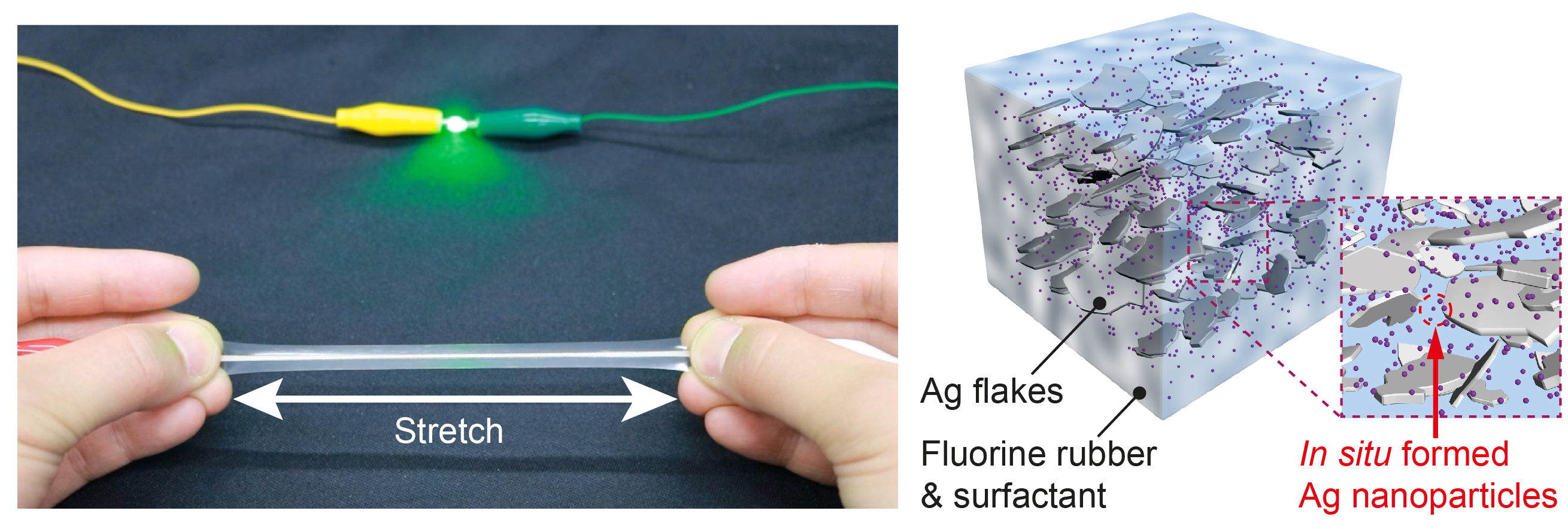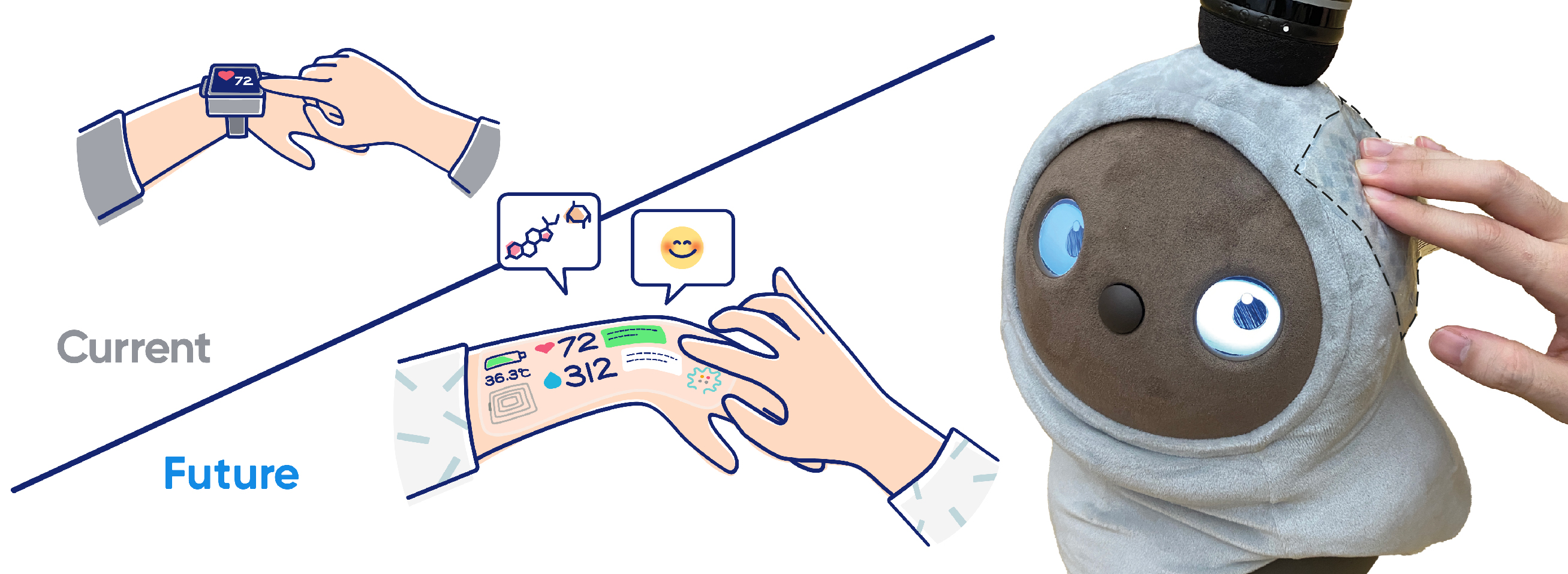
MATSUHISA Naoji Associate Professor
Komaba Campus
Nano Physics & Device Technology
Nanomaterials engineering
Electronic materials/Electric materials
Electron device/Electronic equipment
Human interface and interaction
Soft and stretchable electronic mateterials and the devices to harmonize human-machine interactions
We are working on the development of electronic materials and devices that are soft and stretchable like a living body. Taking advantage of the softness, we aim to realize a healthcare sensor that integrates the skin and body and the next-generation human computer interface.
Research field 1
Soft and stretchable electronic materials

We are challenging the common belief that rubber does not conduct electricity by developing soft and stretchable electronic materials. Our conductors and semiconductors exhibit electrical properties comparable to non-stretchable electronic materials, while having skin-like softness and extreme deformability, capable of stretching to several times their original length. Nano- and micro-scale structural control of various types of materials (e.g. conjugated polymer, carbon/metal nanomaterials, composites, etc.) breaks the trade-off between electrical and mechanical properties.
Research field 2
Soft and stretchable electronic device systems

We are working on the development of various novel electronic devices using soft and stretchable electronic materials. We have realized stretchable high-density sensor arrays, light-emitting diodes, high-frequency diodes, and lithium-ion batteries. Compared to conventional rigid electronic devices, they are extremely soft and mechanically robust. Furthermore, we are also working on system construction, such as sensor networks, by combining the developed devices.
Research field 3
Novel applications of soft electronic devices

We are exploring the applications of soft electronic devices. In particular, we anticipate their use in wearable devices that make contact with our soft biological tissues, similar to the developed electronic devices. Soft electronic devices cause minimal discomfort when worn for extended periods, and their high conformability to the skin allows for highly accurate biometric signal measurements through sensors. Moreover, as they do not hinder the wearer's natural activities, they are expected to be applied in immersive next-generation human-computer interfaces and other similar applications. We are also interested their use as the artificial skin of soft/rigid robots.